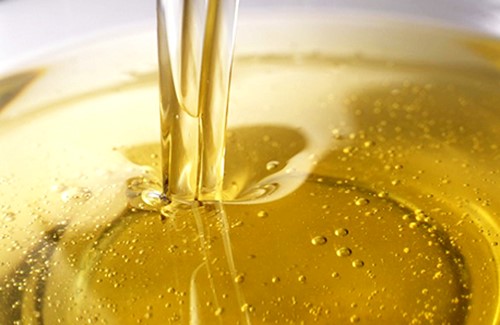
India is known for its diverse cuisine and the use of aromatic spices and herbs. Edible oils play a vital role in Indian cooking, with each region having its own preference for different types of oils. Here are ten of the most popular edible oils used for cooking in India.
- Mustard oil: Mustard oil is one of the most commonly used oils in Indian cuisine. It is extracted from mustard seeds and has a pungent flavor. It is commonly used in North Indian cuisine to make pickles and fry snacks and vegetables.
- Groundnut oil: Groundnut oil, also known as peanut oil, is widely used in South Indian cooking. It is extracted from peanuts and has a mild flavor that does not overpower the taste of other ingredients. It is commonly used for frying snacks, making dosas, and uttapams.
- Sesame oil: Sesame oil is extracted from sesame seeds and has a nutty flavor. It is commonly used in South Indian and Chinese cuisine. It is known for its health benefits and is used for cooking and as a dressing for salads.
- Coconut oil: Coconut oil is extracted from coconut and is widely used in South Indian cuisine. It has a distinct flavor and aroma that is used to enhance the taste of curries, chutneys, and sweets.
- Sunflower oil: Sunflower oil is a popular cooking oil used in Indian kitchens. It is extracted from sunflower seeds and has a mild flavor. It is used for frying and cooking curries and is also used as a salad dressing.
- Rice bran oil: Rice bran oil is a healthy cooking oil extracted from the outer layer of rice grains. It is a good source of antioxidants and is known for its cholesterol-lowering properties. It is commonly used for frying, sautéing, and baking.
- Soybean oil: Soybean oil is extracted from soybeans and is a popular cooking oil in India. It has a neutral taste and is commonly used for frying and sautéing. It is also used as an ingredient in mayonnaise, salad dressings, and baked goods.
- Olive oil: Olive oil is widely used in Mediterranean cuisine and is gaining popularity in Indian kitchens. It is extracted from olives and has a fruity flavor. It is used for cooking and as a salad dressing.
- Corn oil: Corn oil is extracted from corn and has a mild taste. It is commonly used for frying and baking. It is also used in salad dressings and mayonnaise.
- Canola oil: Canola oil is extracted from rapeseed and has a neutral taste. It is commonly used for frying, baking, and cooking. It is also used as an ingredient in salad dressings and mayonnaise.
Each region has its own preference for different oils, and the use of oils varies according to the type of dish being prepared. While the above ten oils are the most popular in India, there are many other oils that are used in different parts of the country.
The oils are extracted from various sources such as seeds, nuts, and fruits, and undergo different levels of processing before they are consumed. Here is a comparison of the above ten popular edible oils in India based on their level of processing.
- Mustard oil: Mustard oil is extracted from mustard seeds by pressing, and then the oil is filtered to remove impurities. This oil is typically cold-pressed, and therefore it is considered to be minimally processed.
- Groundnut oil: Groundnut oil is extracted from peanuts, and the oil is obtained by pressing the nuts. It is then refined to remove impurities and to increase the shelf life of the oil. This oil is considered to be moderately processed.
- Sesame oil: Sesame oil is extracted from sesame seeds, and the oil is obtained by pressing the seeds. It is then refined to remove impurities and to increase the shelf life of the oil. This oil is considered to be moderately processed.
- Coconut oil: Coconut oil is extracted from coconut flesh, and the oil is obtained by pressing or through a process of boiling and fermenting. This oil is typically minimally processed, and therefore it retains its natural flavor and aroma.
- Sunflower oil: Sunflower oil is extracted from sunflower seeds, and the oil is obtained by pressing or through a process of solvent extraction. It is then refined to remove impurities and to increase the shelf life of the oil. This oil is considered to be highly processed.
- Rice bran oil: Rice bran oil is extracted from the outer layer of rice grains, and the oil is obtained through a process of solvent extraction. It is then refined to remove impurities and to increase the shelf life of the oil. This oil is considered to be highly processed.
- Soybean oil: Soybean oil is extracted from soybeans, and the oil is obtained through a process of solvent extraction. It is then refined to remove impurities and to increase the shelf life of the oil. This oil is considered to be highly processed.
- Olive oil: Olive oil is extracted from olives, and the oil is obtained by pressing the fruit. It is then filtered to remove impurities, and no further processing is required. This oil is typically minimally processed.
- Corn oil: Corn oil is extracted from corn, and the oil is obtained through a process of solvent extraction. It is then refined to remove impurities and to increase the shelf life of the oil. This oil is considered to be highly processed.
- Canola oil: Canola oil is extracted from rapeseed, and the oil is obtained through a process of solvent extraction. It is then refined to remove impurities and to increase the shelf life of the oil. This oil is considered to be highly processed.
The level of processing of edible oils varies depending on the type of oil and the method of extraction. While some oils are minimally processed, others undergo extensive refining processes to remove impurities and increase their shelf life. When choosing an oil, it is important to consider the level of processing and the potential impact on its nutritional value and flavor.
In addition to the oils mentioned above, there are several other oils that are considered to be minimally processed. These include:
- Flaxseed oil: Flaxseed oil is extracted from the seeds of the flax plant, and the oil is obtained through a process of cold-pressing. It is typically not refined, which makes it a minimally processed oil.
- Avocado oil: Avocado oil is extracted from the flesh of the avocado fruit, and the oil is obtained through a process of cold-pressing. It is typically not refined, which makes it a minimally processed oil.
- Walnut oil: Walnut oil is extracted from the nuts of the walnut tree, and the oil is obtained through a process of cold-pressing. It is typically not refined, which makes it a minimally processed oil.
- Hempseed oil: Hempseed oil is extracted from the seeds of the hemp plant, and the oil is obtained through a process of cold-pressing. It is typically not refined, which makes it a minimally processed oil.
- Pumpkin seed oil: Pumpkin seed oil is extracted from pumpkin seeds, and the oil is obtained through a process of cold-pressing. It is typically not refined, which makes it a minimally processed oil.
Minimally processed oils are generally considered to be healthier than highly processed oils, as they retain more of their natural nutrients and flavor. However, it is important to note that some minimally processed oils have a lower smoke point, which makes them unsuitable for high-heat cooking. Before using a minimally processed oil, it is important to consider its smoke point and choose the appropriate cooking method.
When it comes to high-heat cooking, it’s important to choose oils that have a high smoke point, which is the temperature at which the oil starts to break down and smoke. Oils with a higher smoke point are more stable and can withstand higher temperatures without breaking down and releasing harmful compounds.
Here are some minimally processed oils that have a higher smoke point and are good for high-heat cooking:
- Avocado oil: Avocado oil has a smoke point of around 520°F (271°C), which makes it one of the best oils for high-heat cooking. It’s also rich in monounsaturated fats, which are considered to be heart-healthy.
- Almond oil: Almond oil has a smoke point of around 430°F (221°C), which makes it suitable for high-heat cooking methods such as frying and sautéing. It’s also a good source of vitamin E and antioxidants.
- Coconut oil: While coconut oil is minimally processed, its smoke point can vary depending on the type of coconut oil. Virgin coconut oil has a smoke point of around 350°F (177°C), while refined coconut oil has a smoke point of around 450°F (232°C). Refined coconut oil is a better option for high-heat cooking.
- Ghee: Ghee, which is a type of clarified butter, has a smoke point of around 485°F (252°C). It’s a popular cooking fat in Indian cuisine and is also used in Ayurvedic medicine.
- Peanut oil: Peanut oil has a smoke point of around 450°F (232°C), which makes it suitable for high-heat cooking methods such as frying and stir-frying. It’s also a good source of monounsaturated fats.
It’s important to note that even minimally processed oils can break down and produce harmful compounds if they are heated beyond their smoke point. It’s best to use these oils in moderation and avoid overheating them.
To conclude this from the perspective of Indian food, the most commonly available and accessible minimally processed oils are Coconut Oil, Ghee, Peanut Oil, & Mustard Oil – however, you might want to look into the source of where they are coming from as there are so many factors that can impact the quality, taste, and nutrition of the same. As a rule any oil which is available on the shelf and claims to be heart-healthy – might just be a scam – so be cautious of them. To be fair, eating them would also not kill you, but it’s best to avoid them, and use them only when it’s absolutely essential – for eg in deep frying.
We should be having a healthy mix of oils in our kitchen and use different oils for different needs, offering more diversity to our gut ecosystem and fulfilling the needs of all kinds of fats that our body needs.
Which is the best edible oil for cooking in India?
India is a country rich in culinary diversity, and different regions prefer different types of oils for their cooking.
In the North and Eastern parts of India, mustard oil, known for its pungent aroma and robust flavor, is extensively used. High in beneficial omega-3 and omega-6 fatty acids, this oil brings a unique flavor to dishes while also promoting heart health.
Down South, coconut oil is a staple. It is rich in medium-chain fatty acids that can provide an instant source of energy. Additionally, it’s believed to support heart health. The distinctive flavor of coconut oil lends an authentic taste to Southern Indian cuisine.
Groundnut oil and sesame oil are favored in the Western and Southern parts of India. While groundnut oil is rich in heart-healthy monounsaturated and polyunsaturated fats, sesame oil is loaded with antioxidants.
Now, onto the topic of variety. While sticking to local oils aligns with sustainability and supports your regional cuisine, it is also beneficial to have a healthy mix of oils in your kitchen.
Using a variety of oils can offer a spectrum of flavors and health benefits. For example, olive oil, rich in monounsaturated fats and antioxidants, is great for salads and low-heat cooking. Rice bran oil, with its cholesterol-fighting properties, is excellent for high-heat cooking. Sunflower oil, packed with Vitamin E, is often favored for deep frying due to its high smoke point.
The key takeaway here is to use oils purposefully. Each oil has a unique smoke point – the temperature at which it starts to smoke and break down. For example, mustard oil and groundnut oil, with their high smoke points, are suitable for frying and sautéing. In contrast, olive oil is ideal for low to medium-heat cooking.
You must embrace your local oils for their unique flavors and health benefits and don’t shy away from experimenting with a mix of different oils. This way, you can enhance your dishes, derive diverse health benefits, and have a fun, flavorful culinary journey.
However, here are some of the most commonly used and beneficial types of cooking oil in India:
- Mustard Oil: Mustard oil is widely used in Northern and Eastern India. It is known for its pungent aroma and strong flavor. It has a high smoking point, making it suitable for deep frying and cooking at high temperatures. It is also rich in omega-3 and omega-6 fatty acids and has a good ratio of these, which can contribute to heart health.
- Coconut Oil: It is predominantly used in South India. Coconut oil is rich in medium-chain fatty acids, which can be beneficial for heart health and potentially provide an instant source of energy.
- Groundnut Oil: Also known as peanut oil, it is commonly used in Western and Southern India. It is rich in monounsaturated and polyunsaturated fats, which are beneficial for heart health. It also has a high smoking point.
- Sesame Oil: Sesame oil, particularly black sesame oil, is popular in Eastern and Southern India. It’s high in antioxidants and is believed to have several health benefits.
- Olive Oil: While not traditionally used in Indian cooking, olive oil has gained popularity in recent years due to its health benefits. It is rich in monounsaturated fatty acids, known for its heart-health benefits, and is also a good source of antioxidants.
- Rice Bran Oil: This oil is extracted from the hard outer layer of rice. It is rich in monounsaturated fats and antioxidants, and it’s gaining popularity due to its potential health benefits.
- Sunflower Oil: This oil is quite popular in India for deep frying due to its neutral taste and high smoke point. It is high in Vitamin E and polyunsaturated fats.
- Canola Oil: It is another oil that’s becoming more popular in India. It’s high in monounsaturated fats and has a good omega-6 to omega-3 ratio.
Which is the best oil for Indian cooking?
Cooking Indian food requires the right ingredients, and one key component often overlooked is the type of cooking oil used. Different oils can significantly influence the taste, texture, and even the nutritional profile of your dishes.
Here are some of the oils that can help you recreate those authentic Indian flavors even when you’re miles away from India:
- Mustard Oil: This is widely used in North and East Indian cooking and is known for its robust, pungent flavor. It has a high smoke point which makes it excellent for deep frying and sautéing. You can use it for dishes like fish curry, pickles, or Bengali-style stir-fried vegetables. If you can’t find mustard oil, a reasonable substitute might be canola oil or rapeseed oil, but keep in mind the flavor won’t be the same.
- Ghee (Clarified Butter): Ghee is a staple in Indian cooking. It adds a rich, buttery flavor to dishes and is used in everything from lentil soups (daal) to biryanis and desserts. It also has a high smoke point. If you can’t find ghee, clarified butter or butter can be used as a substitute, although the distinctive taste of ghee will be missed.
- Coconut Oil: This is commonly used in South Indian cooking. It gives a distinctive flavor that’s key to dishes like Kerala-style fish curry or Goan prawn curry. If it’s hard to find, you could use palm oil or other neutral-tasting oils, but note that the coconut flavor adds a unique touch to these dishes.
- Sesame Oil: Sesame oil, especially cold-pressed sesame oil, is popular in South Indian and Bengali cuisine. Its distinct flavor profile works beautifully in dishes like tamarind rice or jaggery-laden sweets. In case you can’t find it, peanut oil could work as a substitute, although the taste will vary.
- Groundnut/Peanut Oil: Widely used across India, this oil has a high smoking point making it great for frying and sautéing. It gives a nice flavor to dishes like masala dosa or stuffed parathas. A possible substitute could be sunflower oil.
Remember, the choice of oil can significantly impact your dish’s authenticity. However, due to health reasons or dietary preferences, you may want to vary the oils you use. All these oils have their own set of nutritional benefits but should be used in moderation as part of a balanced diet.
Finally, each oil has a unique smoke point – the temperature at which it starts to smoke and break down. It’s important to use oils with a high smoke point for frying and sautéing, and oils with a lower smoke point for light sautés or for finishing dishes.
With this guide in your culinary toolkit, you’re now ready to embark on your Indian cooking journey, recreating the rich and diverse flavors of India right in your overseas kitchen. Enjoy your cooking adventure!
Which are the best Indian cooking oils for health?
Determining the best cooking oil for your health can depend on multiple factors including your dietary needs, cooking methods, and the nutritional profile of the oil. That said, there are several oils commonly used in Indian cuisine that are considered healthy due to their nutritional composition:
- Mustard Oil: A staple in North and East Indian cuisine, mustard oil is rich in monounsaturated fats (MUFA) and polyunsaturated fats (PUFA), including omega-3 and omega-6 fatty acids. These fatty acids are essential for our bodies and are associated with heart health. Mustard oil also has a high smoke point which makes it suitable for high-heat cooking methods like frying.
- Coconut Oil: While coconut oil is high in saturated fats, these are mainly in the form of medium-chain triglycerides (MCTs) which are metabolized differently by our body and can be used as a quick source of energy. Some research also suggests that coconut oil may help increase good HDL cholesterol.
- Sesame Oil: This oil, popular in Southern and Eastern India, is rich in antioxidants and has anti-inflammatory properties. It also contains a good balance of monounsaturated and polyunsaturated fats.
- Groundnut Oil (Peanut Oil): Groundnut oil is a good source of monounsaturated fats, which are beneficial for heart health. It also has a high smoke point, making it a good option for frying and sautéing.
- Rice Bran Oil: Extracted from the hard outer layer of rice, rice bran oil is rich in antioxidants and vitamin E. It contains a good balance of monounsaturated, polyunsaturated, and saturated fats.
- Canola Oil: Not traditionally used in Indian cooking, but increasingly popular due to its health benefits, canola oil is low in saturated fat and contains heart-healthy omega-3 fatty acids. It also has a high smoke point, making it versatile for various cooking methods.
- Olive Oil: While not traditionally used in Indian cooking, olive oil (particularly extra virgin olive oil) is rich in monounsaturated fats and antioxidants. It is best used for low-heat cooking or as a finishing oil.
All these oils have their own health benefits and can be incorporated into a balanced diet. Let’s see how Indian oils compare to olive oil.
- Olive Oil: This oil, particularly extra virgin olive oil, is known for its health benefits. It is rich in monounsaturated fats, particularly oleic acid, which are considered heart-healthy fats. Olive oil also contains polyphenols, which have antioxidant properties. Its smoke point can vary from 325°F (extra virgin olive oil) to 465°F (extra light olive oil), making it suitable for both light sautéing and deep frying, depending on the type. Olive oil has a distinctive taste and is commonly used in Mediterranean cuisine.
- Mustard Oil: Popular in North and East Indian cooking, mustard oil has a strong, pungent flavor. It is high in monounsaturated and polyunsaturated fats, including omega-3 and omega-6 fatty acids. Its smoke point is around 480°F, making it suitable for high-heat cooking. However, it’s important to note that unrefined mustard oil is not typically recommended for use in the U.S., Canada, and EU due to its high erucic acid content.
- Coconut Oil: Widely used in South Indian cooking, coconut oil has a distinctive flavor that imparts a unique taste to dishes. It is high in saturated fats, but these are mainly in the form of medium-chain triglycerides (MCTs), which are absorbed and metabolized differently than other saturated fats. Its smoke point is around 350°F, making it suitable for medium-heat cooking.
- Sesame Oil: Sesame oil, particularly cold-pressed sesame oil, is used in Southern and Eastern India. It has a distinct flavor and is high in antioxidants and anti-inflammatory compounds. Its smoke point is around 350°F (unrefined) to 450°F (semi-refined), making it good for medium to high-heat cooking.
- Groundnut/Peanut Oil: This oil is high in monounsaturated fats, which can be beneficial for heart health. Groundnut oil has a high smoke point (around 450°F), making it suitable for high-heat cooking. It has a relatively mild flavor that doesn’t overpower the taste of dishes.
- Rice Bran Oil: A fairly neutral-tasting oil, rice bran oil is rich in monounsaturated fats and antioxidants. It has a high smoke point (around 450°F), making it suitable for frying and high-heat cooking.
Each oil has its benefits, and the choice often depends on the flavor profile you want for your dish, the cooking method, and your nutritional needs. Olive oil can be a great choice for its heart health benefits and high antioxidant content, but Indian oils also offer diverse flavors and nutritional benefits. It can be beneficial to include a variety of oils in your diet.
Remember, no matter how healthy oil is, it should be used in moderation as part of a balanced diet. The “best” oil often depends on its purpose (like salad dressing, frying, sautéing, baking) and your personal health goals. It’s also beneficial to use a variety of oils to get a mix of different nutrients. As always, consider seeking advice from a registered dietitian or healthcare provider when making decisions about dietary changes.













